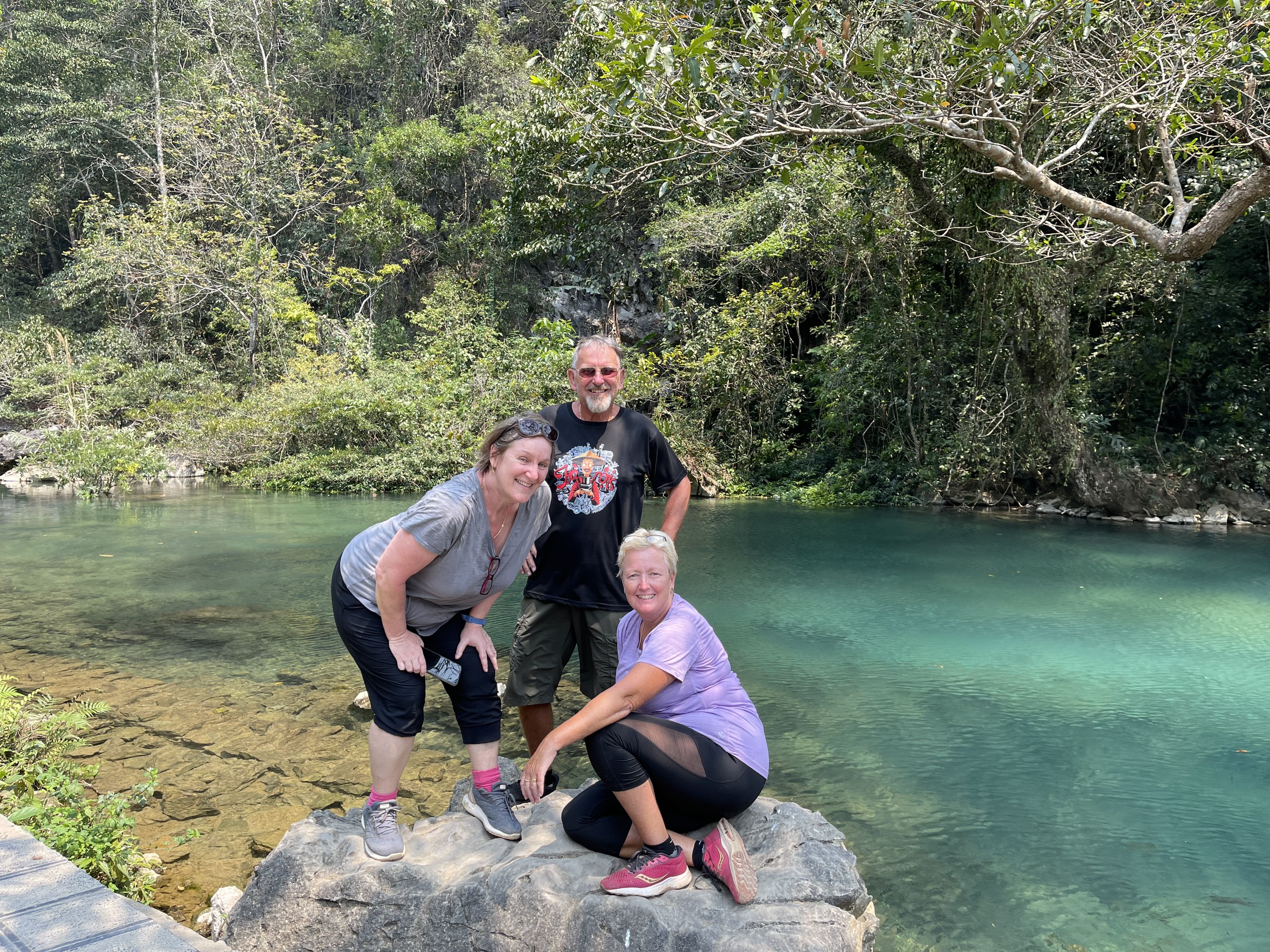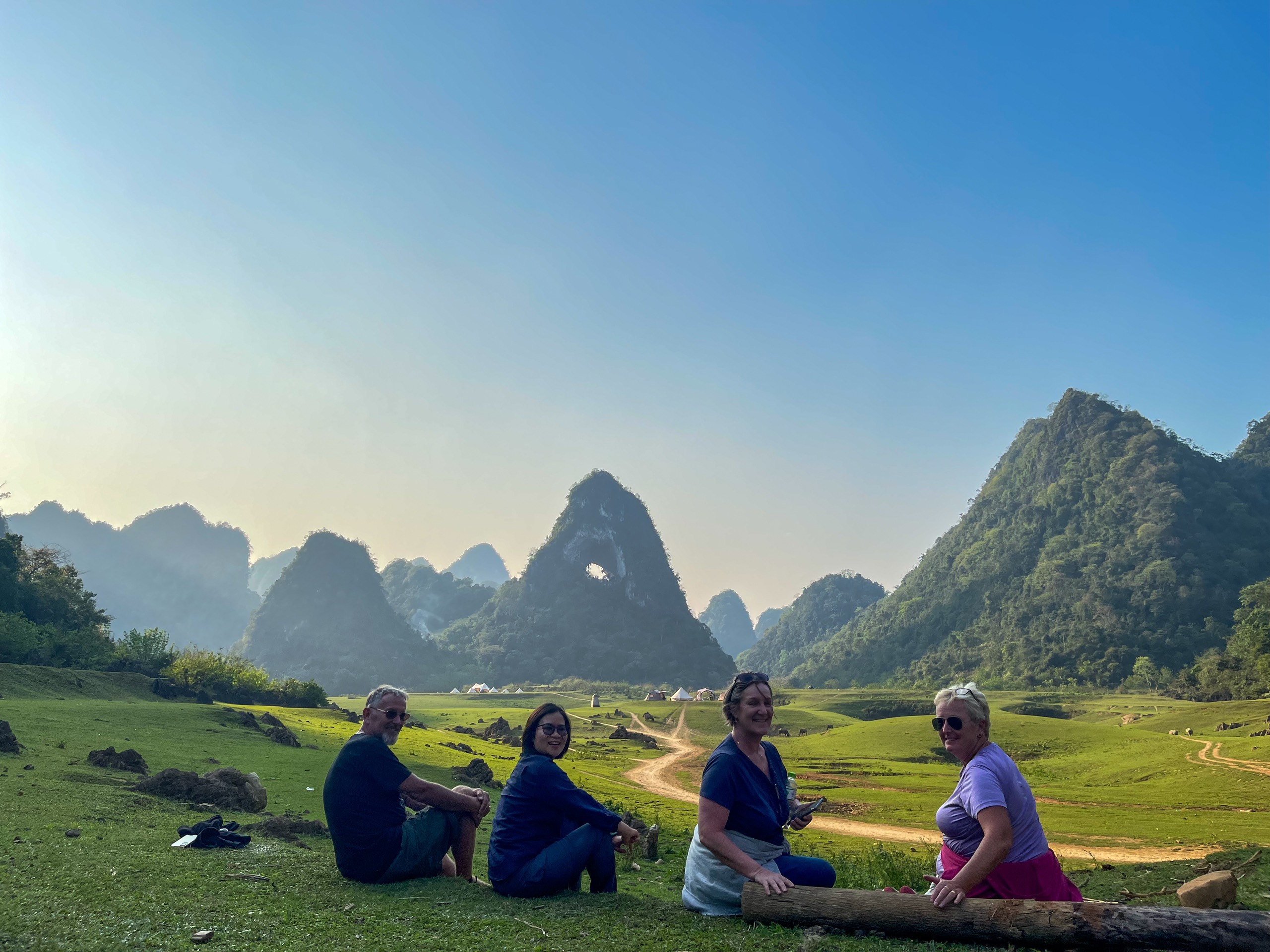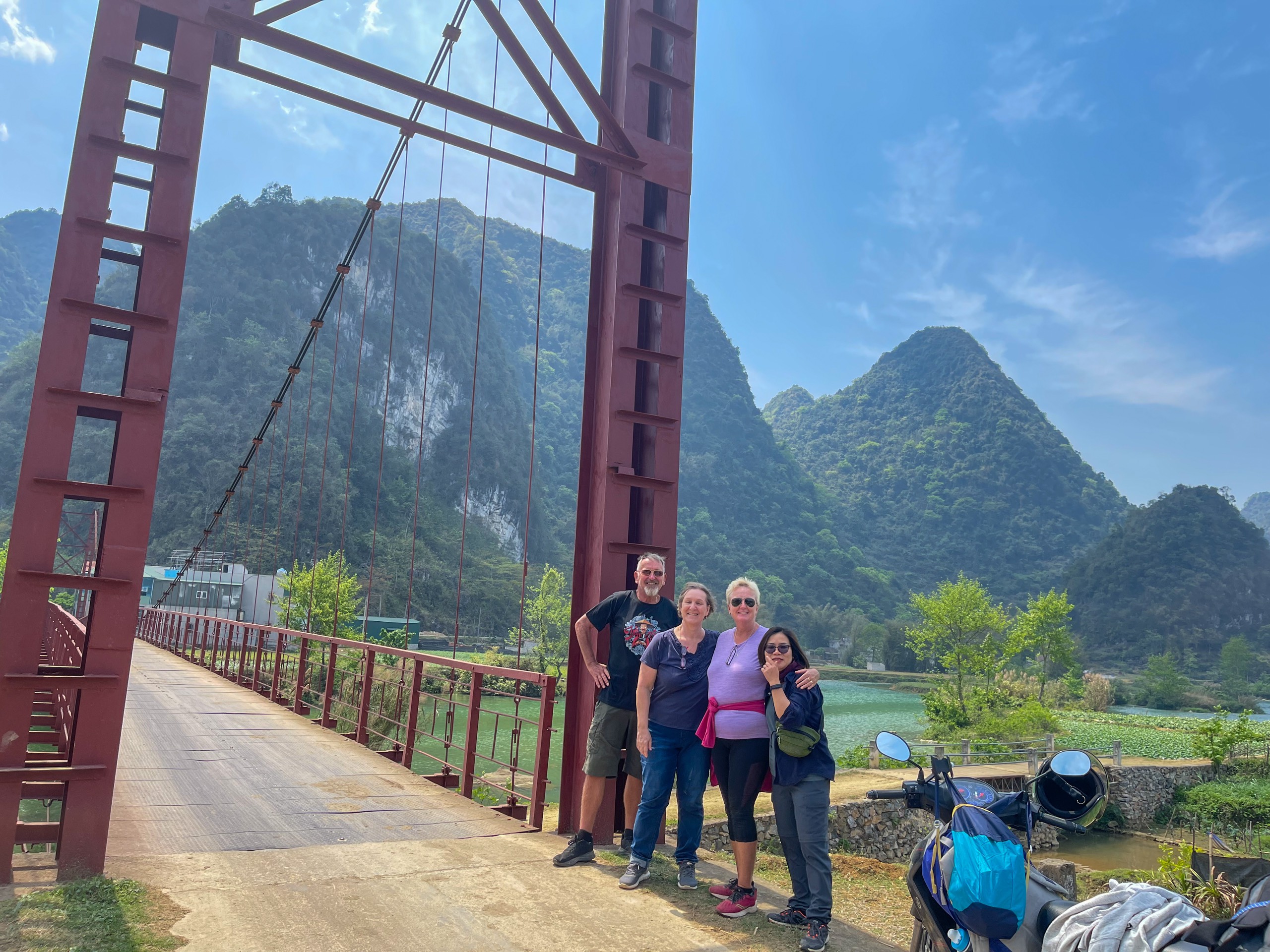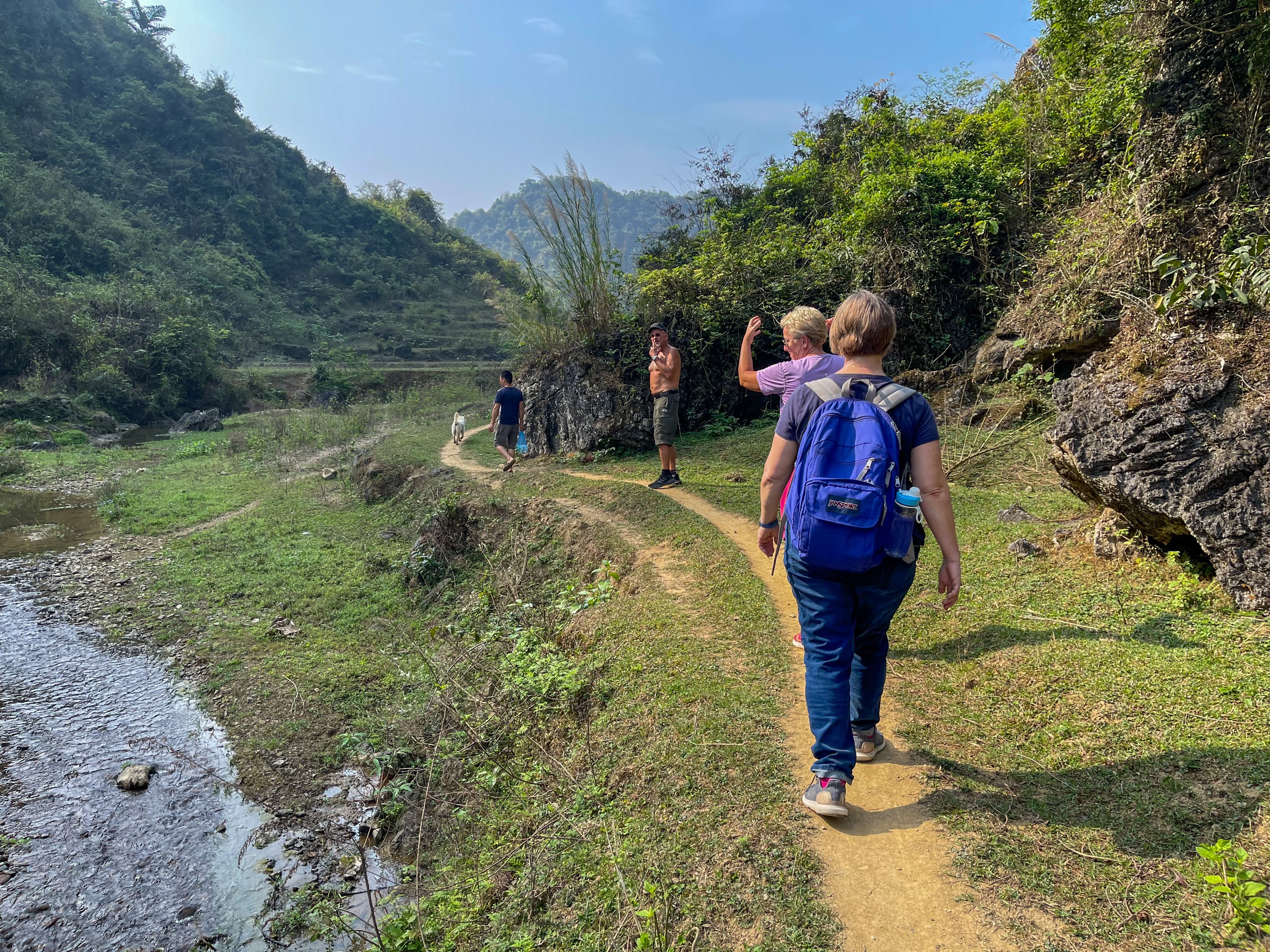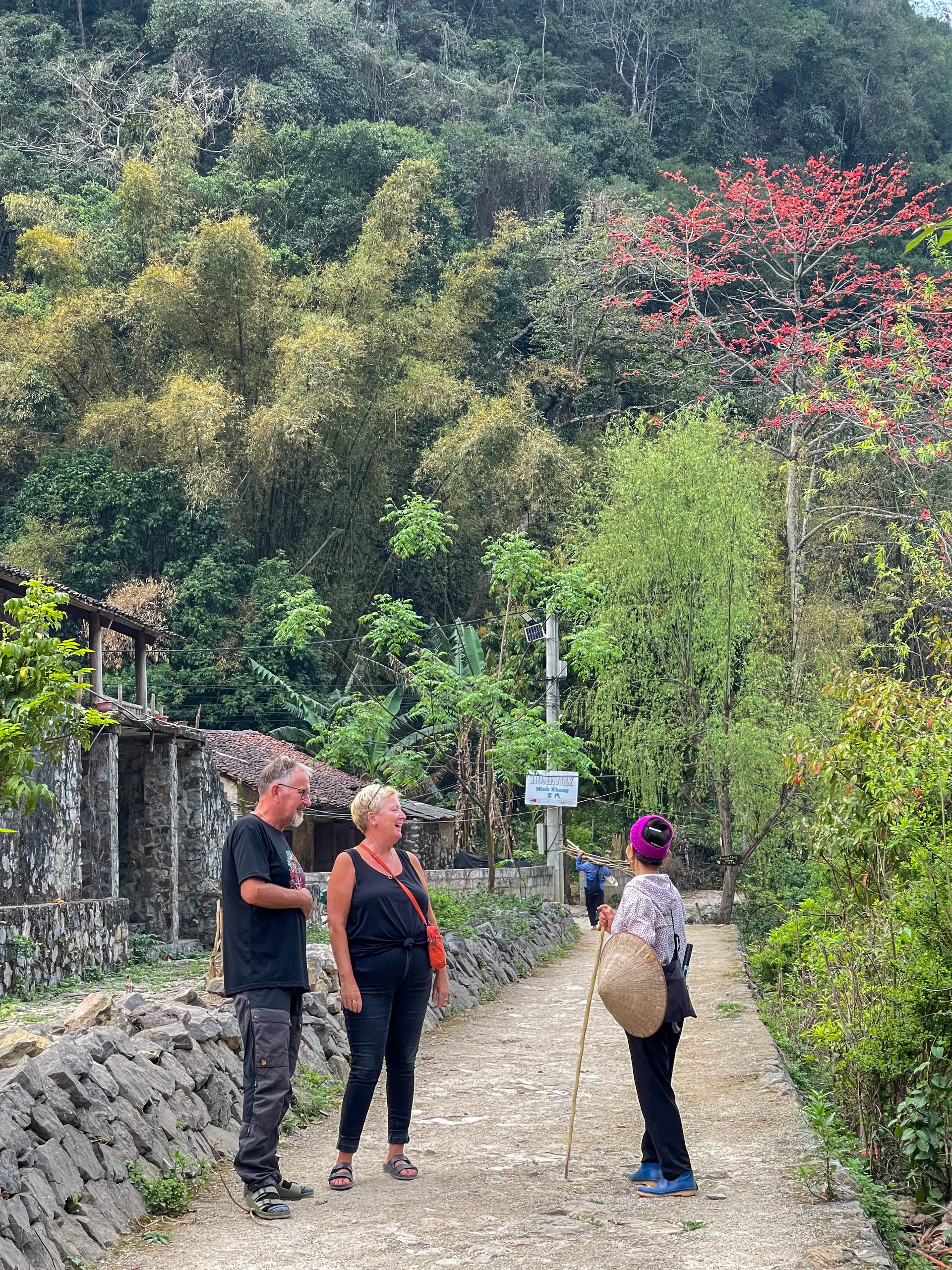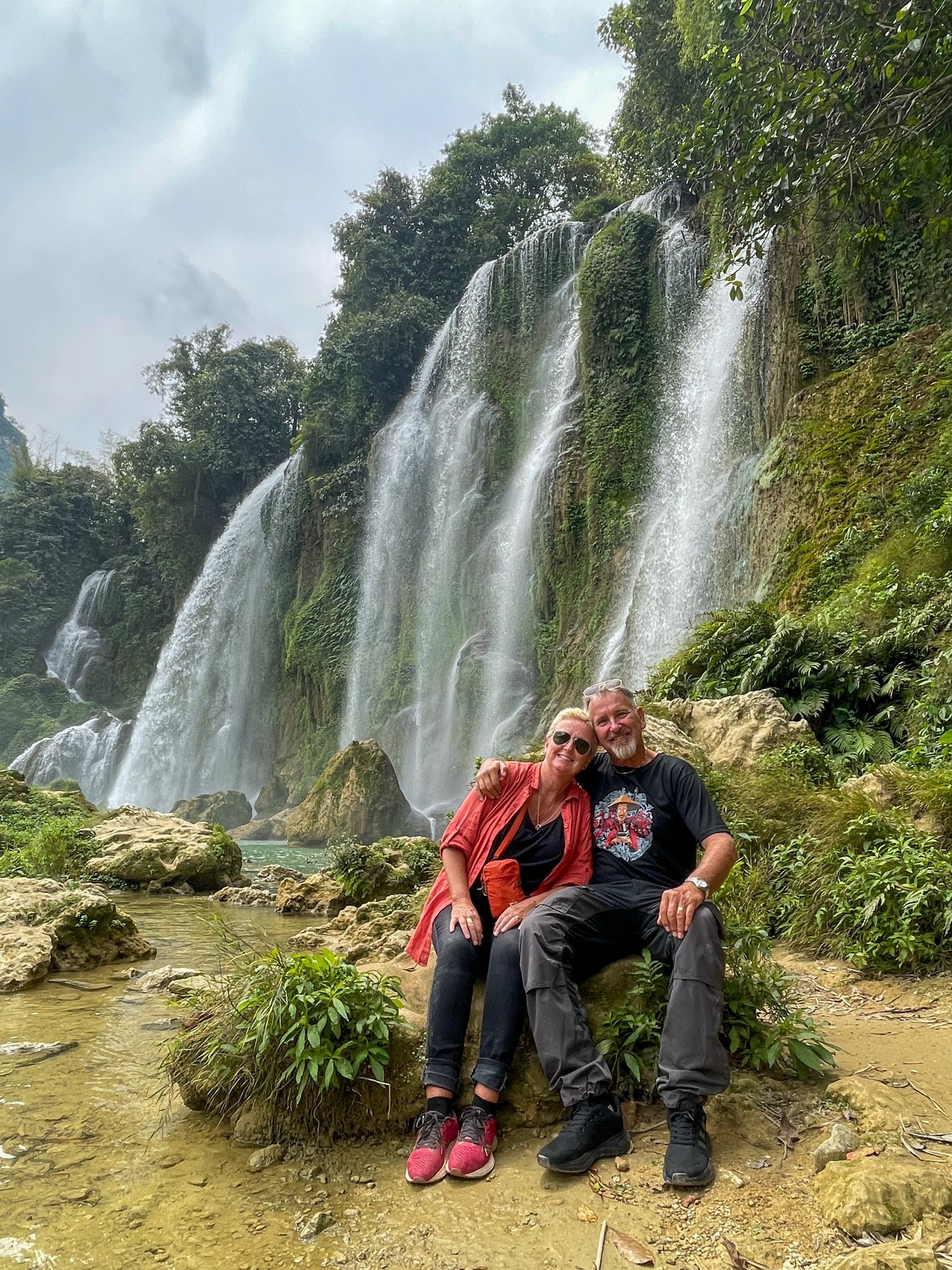3D2N Pac Bo Cave Mt Angel Eye Ban Gioc waterfall & Valley Hike

SUMMARY
Besides bringing you to the most popular natural attractions in Cao Bang, this tour also gives you a full encounter with the local culture and history by bringing you to visit the traditional craft villages where you can witness the daily local life and the way they preserve the traditional craft things which are gradually losing of in the modern life. Cao Bang also played a significant role in the communist movement, we will visit Pac Bo cave, where Ho Chi Minh also took refuge in a cave. Additionally, you also can enjoy the quiet and calm beauty of nature by doing some short hikes in the region. We promise you won't disappoint.
Possibility to self-drive or to ride a pillion (behind a guide/driver). If self-driving, we recommend sound prior motorcycling experience.
Accommodation will be two nights in the different ethnic minority homestay.
Day 1: Cao Bang city – Ho Chi Minh’s cave: Pac Bo – Mount Angel Eye – Incense Village
After a complimentary breakfast, we start to drive out of Cao Bang city, we head to the frontier area with China, Pac Bo Cave is an important historical site in an enchanting location. The landscape along the Chinese border, in Vietnam’s Cao Bang Province, is characterized by forested limestone mountains. The scene can’t have changed much since 1941, when Ho Chi Minh walked across the border from China, entering his native Vietnam for the first time in 30 years. He lived in Pac Bo Cave for several weeks to coordinate the revolution before moving on to avoid detection.
The gorgeous pool of turquoise water opposite the stalls is Lenin Creek, and the limestone hill behind it is Karl Marx Peak, both named, in the revolutionary spirit of the time, by Ho during his stay here.
Later, we find our lunch in the near-by area, then we head to the Mount Angel Eye, this mountain is also known as Núi Thủng, meaning a mountain with a through-going hole, which is 50m in diameter and 50m above the ground.
The mountain is located in the heart of the valley between Thang Hen Lake complex of the Non Nước Cao Bằng UNESCO Global Geopark, which features a charming landscape with immense grasslands and green lakes.
In the dry season when winter is over and spring comes, at the foot of the Angle Eye Mountain, there is a green grass carpet like velvet.
Thereafter, we drive to Phia Thap incense village where we will check-in a Nung An minority homestay, have dinner and stay overnight here. (Day includes breakfast, lunch, dinner).
Day 2: Traditional Craft villages – Vinh Quy grass hill – Truc Lam Buddhist Temple – Khuoi Ky stone village
After breakfast, we walk around the village, you will witness villagers dry the incense all around the roads of the village. Although no one knows when the incense making craft began, this tradition has been handed down from generation to generation in the Nung community.
Then we head to Dia Tren paper village, visit a local family here, we have a chance to see the locals produce paper from “Duong” tree, their products are mostly used for spiritual ceremonies/decoration or painting, calligraphy.
Later, we keep driving to Phuc Sen, a forging Village still retains precious traditional cultural features. And the most famous is still knife smithing.
We find our lunch along the way. Thereafter, we head to Vinh Quy grass hills, the ascent to the peak of Vinh Quy Grass Hill takes about 15 minutes on foot. From the hilltop, you are treated to a breathtaking view of endless mountains, lush forests, vast fields, and charming villages.
Vinh Quy Grass Hill offers a different beauty in each season. Its peak allure shines from May to October when refreshing rains bring a mountainous freshness, green cover and fragrance to the area. On the other hand, from October to January, Vinh Quy Grass Hill transforms into a landscape of fiery grass, painting the area in a unique orange-yellow hue.
We get back on road and drive to Truc Lam buddhist temple, it is located in Phia Nham mountain, you can watch the beauty of Ban Gioc waterfall and the valley from the temple. This is a project with high investment capital, great significance for cultural values, helping to meet the religious and spiritual needs of the Vietnamese people in general.
Then we head to Khuoi Ky and check in in a Tay family homestay, have dinner and stay overnight here. (Day includes breakfast, lunch, dinner).
Day 3: Nguom Ngao cave – Ban Gioc waterfall – Ngoc Con Hike – Cao Bang city
After breakfast, we say thank to the host family and head to Nguom Ngao cave or Tiger cave, Nguom Ngao means “Tiger Cave” in the Tay ethnic language.
Once entering the cave, you will be amazed at strangely shaped stalactites. Nguom Ngao is home to multiple limestone chambers, floors, stairs, and corridors in various sizes, along with stalactites and stalagmites in diverse shapes such as a coral reef, a ship, a waterfall, an overturned lotus flower, and a terraced field. All give this cave magnificent and fantastic beauty.
Notably, colors of stalactites here are different from those in caves in other localities thanks to the mixture of calcium with many other substances.
Then we drive to Ban Gioc waterfall, the fourth largest transnational waterfall on earth. Ban Gioc Waterfall is one of Vietnam’s most impressive natural sights. The falls occur on the Quay Son River, a beautiful jade-blue body of water flowing from China through a pastoral landscape of rice fields and bamboo groves surrounded by limestone pinnacles.
We find our lunch in the near-by area, then head to Ngoc Con valley, where we will do a hike to an amazing viewpoint of the valley. In this stunning valley, you will find impressive mountains with stretch out rice fields, picturesque villages of minorities and a calm, beautiful river running through it. Then we keep driving through Phong Nam valley to get back to Cao Bang city. Tour ends. (Day includes breakfast, lunch).
Disclaimer: While above itinerary outline the broad and most likely inclusions. At Green Riders we are no firm believers in absolute programs. There are many reasons why things might have to be modified to situations and facts that may be both within the control and beyond when we embark on a tour.


